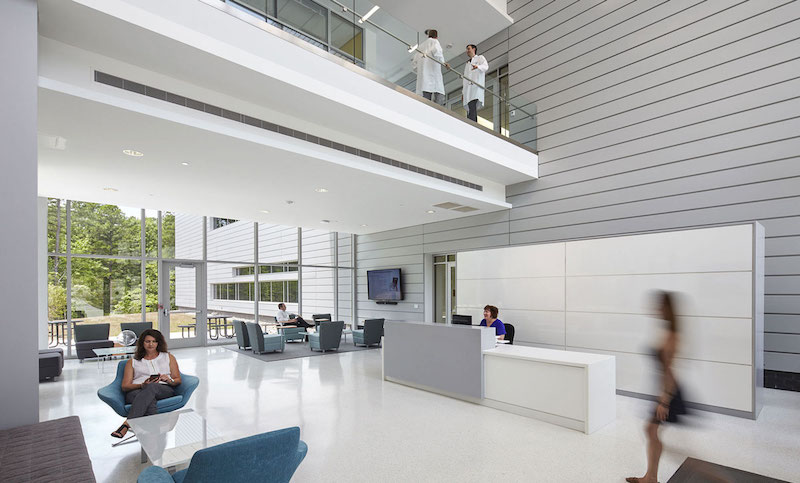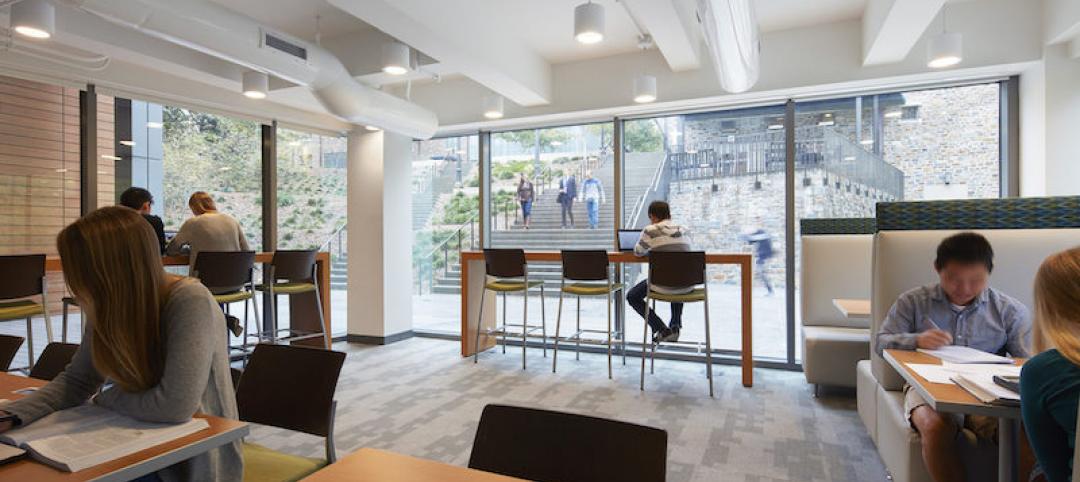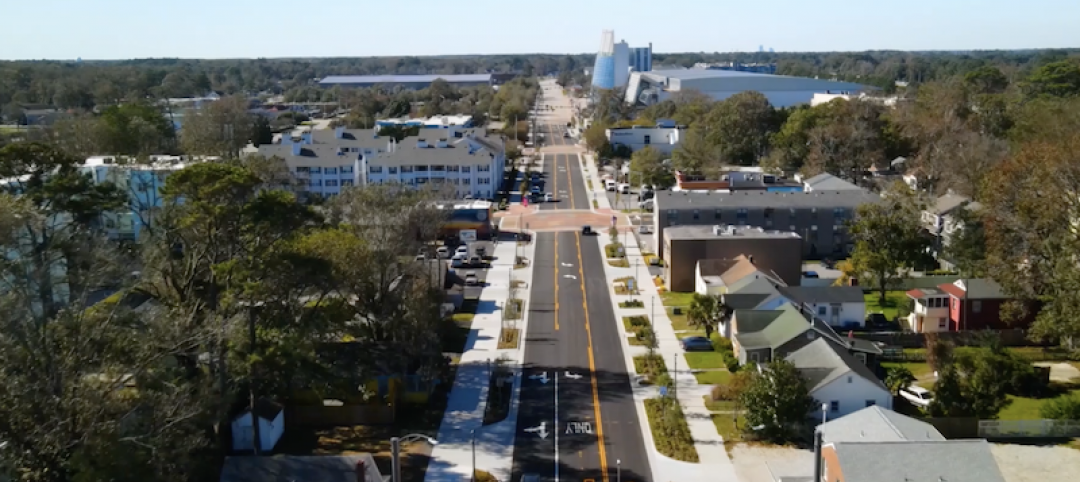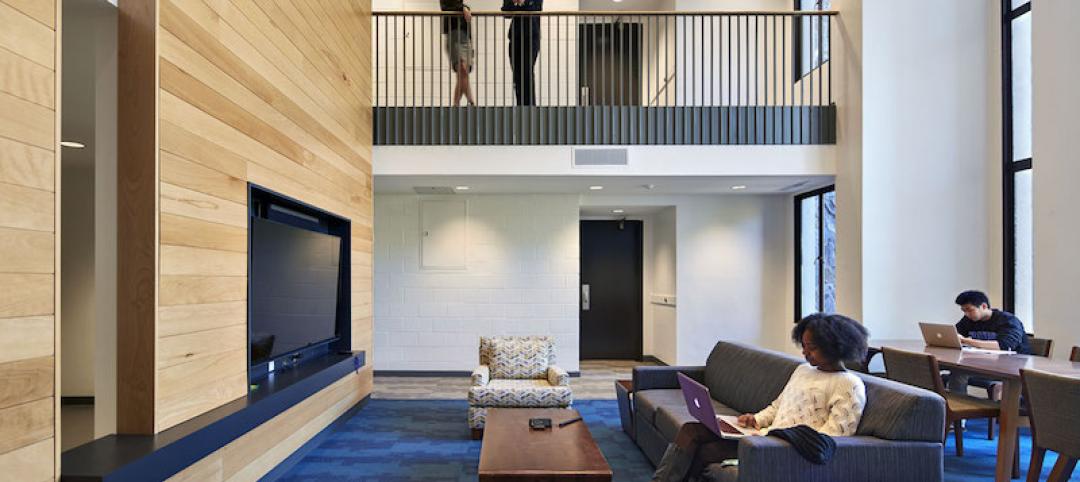Demand for new S+T workplaces has remained strong and even increased in 2020 as companies pursue emerging therapies and look to develop work environments that facilitate research at the highest level. Researchers in STEM fields require access to a lab to perform much of their work, and although the highly collaborative, team-based nature of research projects is difficult to accommodate during a global pandemic, spaces that foster collaboration remain a long-term priority.
Within the constraints of the typical COVID-19 office protocols, lab users face the additional challenge of working with hands-on processes, tight schedules, and shared resources. While some research spaces have been dedicated for vaccine research, all researchers deserve the space to approach their work in a safe and secure environment. In the following, Clark Nexsen’s Anne Bradley, Julia Janaro, and Megan Chorley share their best practices for S+T office design:
Open Offices and Labs Offer More Flexibility
We’ve seen a shift in recent years toward more open labs and open office layouts with the goal of promoting collaboration and improving efficiency. Visual connection reinforces the sense of community between scientists and fosters interaction, particularly between those who may work primarily on different teams. By using glazing along lab spaces, we capitalize on the open office, put research on display with views into and out of the lab, and create greater connectivity within the facility. The transparency into the lab environment also acts as a promotional tool when visitors tour the office.
The emphasis on openness also improves flexibility in the lab setting in terms of modifying for changing research projects and for unforeseen events like the ongoing pandemic. Flexible labs have fared better than their older, less adaptable counterparts in accommodating new research and allowing the type of spacing needed to mitigate the spread of COVID-19.
A key consideration in S+T office design is the type of research taking place and how those scientists will be best served by their workspace. For example, if work is more data driven, the researcher might want more control of lighting or to be in a quiet area versus an open office space. An effective design will take varying needs into account and offer a mix of space types for the best work experience.
The Importance of Adjacencies
The open office and focus on collaboration puts new importance on adjacencies. Today, we design team-based settings where teams can see each other, easily work together, and may even interact with different teams. Rooms for heads-down work, team calls, small-group, and full-team work are strategically located to promote usage and provide a diversity of work opportunities. This is particularly valuable because the cross-pollination of ideas shared between different teams helps drive innovation.
Equally significant, principal investigators (PIs) have offices in closer proximity to their teams. Previously, PI and tech offices would be more siloed, with the PI’s office potentially located in a separate part of the building from the lab where their team had office space. Now we emphasize sight lines and better connectivity between the PI and their team.
Formal & Informal Huddle Spaces Foster Collaboration
Building on the importance of adjacency, formal and informal huddle spaces should be interspersed throughout the workplace and readily available. Locating formal huddle spaces close to the lab enables them to serve almost as a continuation of the lab – teams can step out and discuss projects without a long transition. These spaces should feature technology, writable surfaces, and other tools to make them as effective as possible.
Collaboration is critical to successful research, making the integration of a variety of collaborative spaces a priority. A good balance includes formal and informal huddle spaces and larger, more flexible meeting areas. Centralizing support areas like break areas creates the opportunity for them to be multi-functional and increases impromptu interactions. Inviting outdoor spaces also support collaboration and strengthen the sense of community between researchers. During COVID, outdoor spaces are even more important, while indoor huddle spaces are used for fewer people at a time and need to accommodate virtual meetings with easy sharing of content. The opportunity to select an appropriate work space, along the ability to gather and work outside, provide research staff with several choices to maintain proper social distancing and protocols while working together.
Spaces to Share Information
Researchers are constantly preparing and giving presentations on their work, and as a result, pin-up space or ways to share “posters” is a frequent ask for S+T workplaces. We anticipate these spaces will become more digital in the wake of COVID as people have adapted to receiving information that way, although old-school pin-ups are unlikely to disappear entirely. Overall, the goal is to make interior spaces more functional for sharing information between teams. In the wake of COVID and substantial time spent distancing from each other, it is and will be more important than ever to find ways to connect with each other, which will tie into how work- and idea-sharing will evolve.
The Impact of COVID-19 on S+T Workplaces
Most businesses and workplaces are in a bit of a holding pattern, waiting to see what COVID-driven changes will actually become permanent or what new methodologies might grow from this experience. For S+T companies, working remotely long term hasn’t been possible, so the return-to-work strategies and questions are different. For example, will collaborative spaces become bigger long term, or will we temporarily use a six-person conference room for only two people but eventually return to normal capacity?
The built-in flexibility of newer S+T workplaces is a benefit during any unforeseen circumstance, including COVID-19. Bigger, open labs have made it easier to add safety measures and allow distancing without sacrificing the ability to see and speak to other researchers. Beyond the work itself, seeing other people (versus being isolated in a smaller lab) supports mental well-being during a difficult time. Other lab considerations for the future include how access points, entries, and space for suiting up may change. These challenges push us to consider possibilities such as establishing an ‘entrance’ and ‘exit’ door, wider entries, adding COVID measures to the PPE process, and incorporating COVID protocols into housekeeping and maintenance.
We have long believed the landscape of “work” is always changing. While COVID-19 has perhaps made the future more uncertain than ever, our focus remains on serving our clients well by designing work environments that address business and cultural objectives.
More from Author
Clark Nexsen | Sep 30, 2024
The importance of selecting healthy materials for K-12 projects
Clark Nexsen interior designers Anna Claire Beethoven and Brittney Just, CID, IIDA, LEED Green Associate, share why it is imperative to specify healthy building materials in K-12 schools.
Clark Nexsen | Aug 1, 2024
How current and future trends are shaping the libraries of tomorrow
Over the last few years, public libraries have transitioned from being buildings that only store and lend books to being fully featured community centers.
Clark Nexsen | Apr 25, 2024
How pools can positively affect communities
Clark Nexsen senior architects Jennifer Heintz and Dorothea Schulz discuss how pools can create jobs, break down barriers, and create opportunities within communities.
Clark Nexsen | Oct 2, 2023
4 design strategies for successful K-12 magnet schools
Clark Nexsen's Donna Francis, AIA, Principal, and Becky Brady, AIA, share four reasons why diverse K-12 magnet schools require diverse design.
Clark Nexsen | May 17, 2023
Designing K-12 schools for students and safety
While bullying, mental health, and other acts of violence are all too common in schools today, designers have shown that smart and subtle preventive steps can make a big difference. Clark Nexsen’s Becky Brady shares how prevention and taking action at the design level can create safe and engaging learning environments.
Clark Nexsen | Jul 1, 2022
How to apply WELL for better design outcomes
The International WELL Building Institute (IWBI) cites attracting top talent, increasing productivity, and improving environmental, social or governance (ESG) performance as key outcomes of leveraging tools like their WELL Building Standard to develop healthier environments.
Clark Nexsen | Jun 3, 2021
What's next for workplace design?
Balancing personal space and the need for collaboration.
Clark Nexsen | Apr 1, 2021
The changing face of freshman and sophomore student housing
As part of a surge in new housing projects for freshman and sophomores, we are seeing increasing demand for double occupancy rooms and suite-style arrangements in both new construction and renovation projects.
Clark Nexsen | Feb 17, 2021
Best practices for streetscape design that cultivates community
Well-designed streetscapes provide a wealth of benefits for their respective communities.
Clark Nexsen | Aug 3, 2020
5 reasons universities are renovating student housing
Clark Nexsen’s Student Life practice leader, Peter Aranyi, discusses the benefits of renovation and why it offers particular value to campuses nationwide.
















